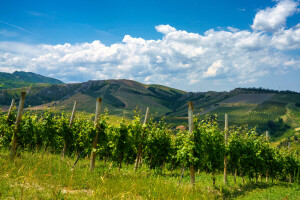 La Society of Wine Educators se complace en anunciar que el Certificado de Especialista en Bebidas (HBSC, por sus siglas en inglés) se encuentra disponible actualmente en español. Es la primera vez que uno de nuestros recursos educacionales está disponible para la audiencia hispana, en su idioma nativo, y se puede acceder a él a través de nuestro Portal.
La Society of Wine Educators se complace en anunciar que el Certificado de Especialista en Bebidas (HBSC, por sus siglas en inglés) se encuentra disponible actualmente en español. Es la primera vez que uno de nuestros recursos educacionales está disponible para la audiencia hispana, en su idioma nativo, y se puede acceder a él a través de nuestro Portal.
El Hospitality/Beverage Specialist Certificate (HBSC) (denominado en español Certificado de Especialista en Bebidas), se ofrece como un programa de autoaprendizaje, a ritmo propio. Se trata de un certificado de nivel básico diseñado para satisfacer las necesidades de las industrias culinaria y hotelera, y sus empleados. Es, a su vez, un excelente curso de iniciación para aquellos quienes planean obtener niveles más altos de certificaciones en vinos, cervezas o licores.
La SWE ofrece este programa para la audiencia de habla hispana debido a la importancia de este grupo dentro de los Estados Unidos, así como para brindar acceso a quienes quieran convertirse en profesionales en el mundo de las bebidas en América Latina, España y el resto de los países de habla hispana. Según la estimación de población del 2020 de la Oficina del Censo de Estados Unidos, hay 60.5 millones de hispanos viviendo en Estados Unidos, lo que representa el 18.4 % de la población total del país.
El HBSC provee una amplia base de conocimiento de producto en las bebidas comerciales más relevantes, no solamente vinos y destilados. El contenido del programa cubre café, té, cerveza, sake, sidra, perada, vinos y destilados. Se incluyen también detalles sobre evaluación sensorial, notas de cata y estándares de servicio para cada tipo de bebida, así como un capítulo sobre el servicio responsable de bebidas alcohólicas.
 La Guía de Estudio del Certificado de Especialista en Bebidas fue escrita por Jane Nickles, MBA, CWE, CSE, Director of Education de la Society of Wine Educators. La totalidad del contenido fue traducido y editado por Elizabeth Yabrudy, Comunicadora Social, CWE, CSS, y miembro del Board of Directors de la SWE.
La Guía de Estudio del Certificado de Especialista en Bebidas fue escrita por Jane Nickles, MBA, CWE, CSE, Director of Education de la Society of Wine Educators. La totalidad del contenido fue traducido y editado por Elizabeth Yabrudy, Comunicadora Social, CWE, CSS, y miembro del Board of Directors de la SWE.
Si deseas ordenar el libro, una versión electrónica del Certificado de Especialista en Bebidas (así como la HBSC Study Guide Second Edition, en inglés) está disponible en Amazon.
The HBSC is available in Spanish!
The Society of Wine Educators is pleased to announce that the Hospitality/Beverage Specialist Certificate (HBSC) is now available in Spanish. It is the first time that one of our educational resources is available for the Hispanic audience, in its native language, and can be accessed through our learning portal.
 The Hospitality/Beverage Specialist Certificate (HBSC) (called in Spanish Certificado de Especialista en Bebidas), is presented as an online self-paced, self-study resource. This entry-level beverage knowledge program designed to fulfill the needs of the hospitality and culinary industries and their employees. It is also an excellent base course for those planning to pursue higher levels of wine, beer, or spirits certifications.
The Hospitality/Beverage Specialist Certificate (HBSC) (called in Spanish Certificado de Especialista en Bebidas), is presented as an online self-paced, self-study resource. This entry-level beverage knowledge program designed to fulfill the needs of the hospitality and culinary industries and their employees. It is also an excellent base course for those planning to pursue higher levels of wine, beer, or spirits certifications.
The SWE is providing this program for the Spanish speaking audience due the importance of this group within the United States as well as to provide access to aspiring beverage professionals throughout Latin America, Spain, and the rest of the Spanish-speaking world. According to the 2020 US Census Bureau population estimate, there are 60.5 million Hispanics living in the United States, representing 18.4% of the U.S. total population.
The HBSC provides a broad base of knowledge, covering all commercially relevant beverages, not just wine or spirits. The program’s content covers coffee, tea, beer, sake, cider, perry, wine, and spirits. Details about sensory evaluation, tasting notes, and service standards for each beverage type are included, as well as a chapter on the responsible service of beverage alcohol.
The HBSC study guide was written by Jane Nickles, MBA, CWE, CSE, Director of Education of the Society of Wine Educators. The entire content was translated and edited by Elizabeth Yabrudy, Journalist, CWE, CSS, and also member of the Board of Directors of the SWE.
If you wish to order the book, an ebook version of the Certificado de Especialista en Bebidas (as well as the HBSC Study Guide Second Edition) is available on Amazon.
 What do all of these items have in common: A new official designation for American Single Malt Whiskey, updated regulations in the Jamaica Rum GI, and the newly created definition of Artisanal Cachaça?
What do all of these items have in common: A new official designation for American Single Malt Whiskey, updated regulations in the Jamaica Rum GI, and the newly created definition of Artisanal Cachaça?











